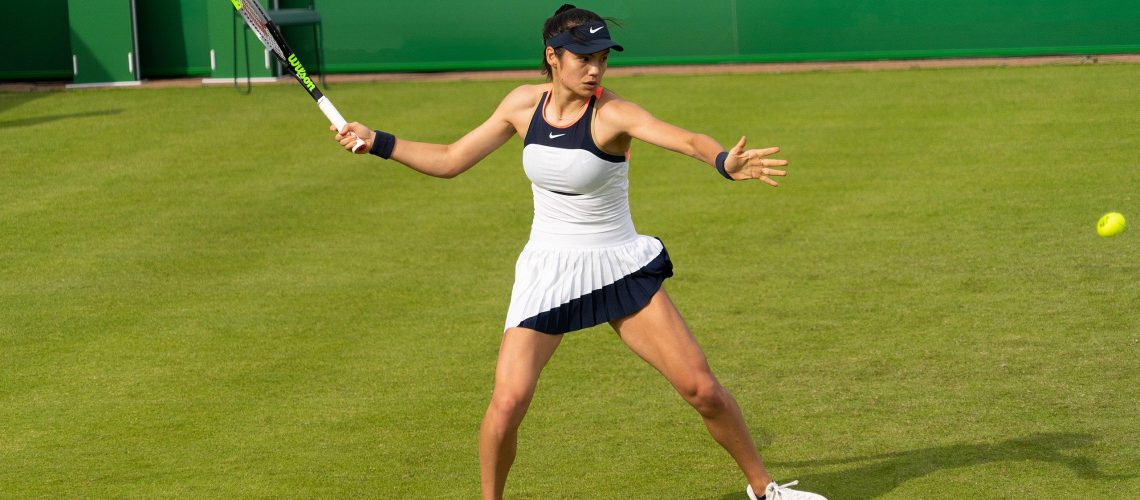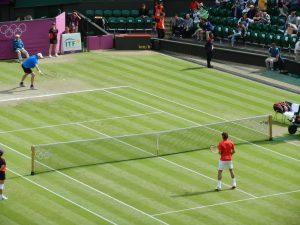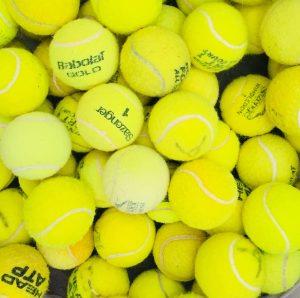We may earn money or products from the companies mentioned in this post.
Introduction
Tennis, a sport that has captivated millions around the world, boasts a rich history dating back centuries One aspect of the game that has stood the test of time is its unique scoring system From its origins in medieval France to the evolution of the modern tennis scoring system we know today, this article delves into the fascinating journey of how tennis scoring came to be
Origins in Medieval France
The roots of tennis scoring can be traced back to medieval France during the 12th century Back then, a precursor to modern tennis called “real tennis” was played by French monks and nobles within monastery walls and royal courts The scoring system used in these early matches differed significantly from what we see on today’s professional courts
In those days, players competed for points known as “chases” Each chase represented an opportunity for a player to gain or lose points based on their performance during specific sequences of play As real tennis gained popularity across Europe, variations of this scoring method began to emerge
Evolution of the Modern Tennis Scoring System
The modern tennis scoring system took shape during the late 19th century when lawn tennis became increasingly popular It was during this period that Major Walter Clopton Wingfield introduced a simplified version of the game with standardized rules and scoring
Wingfield’s new game featured rectangular courts divided into different sections, each serving as a point-scoring zone Players would earn points by successfully hitting the ball into designated areas on their opponent’s side of the court
The introduction of this simplified scoring system brought about significant changes compared to its predecessors Instead of chases or complex point systems, Wingfield’s game utilized a much simpler approach where players accumulated points through successful shots and strategic play
Over time, the scoring system underwent further refinements The concept of “deuce” was introduced to address tied scores at 40-40, replacing the need for endless chases or additional rounds of play From there, games were won by achieving a two-point advantage over an opponent after reaching deuce
The evolution continued with the introduction of tiebreakers in the mid-20th century, which aimed to bring more excitement and efficiency to matches Tiebreakers allowed players to compete in a shortened format where points were counted differently, typically up to seven or ten points
Conclusion
The history of tennis scoring is a testament to the sport’s adaptability and desire for simplicity From its humble origins in medieval France to the standardized system we know today, tennis scoring has evolved over time while still retaining its core principles Understanding this rich history provides us with a deeper appreciation for the game we love and enjoy
The Unique Aspects of Tennis Scoring
In the world of tennis, scoring is far from ordinary The point system, games structure, and match dynamics all have their own intriguing quirks that make the sport even more captivating Let’s dive into the fascinating and unique aspects of tennis scoring
Love, 15, 30, and 40 Points
When it comes to points in tennis, the increments can seem rather peculiar Why do we say “love” for zero? One possible explanation is the clock face theory, where the hand positioned at zero on a clock resembles an egg or oval shape – similar to the French word for egg: “l’oeuf” As players score points, they progress from love to 15, then 30 and finally 40 While this progression may seem arbitrary, it adds an element of intrigue to each rally
Deuce and Advantage
Deuce and advantage are two terms that are synonymous with intense moments in a tennis match To win a game in tennis, a player must win by two points When both players reach 40 points (also known as deuce), they enter a thrilling battle for advantage Scoring one point after deuce gives a player “advantage,” while losing that point brings them back to deuce again This back-and-forth creates suspenseful moments and adds strategic depth to gameplay
Games, Sets, and Matches Structure

Tennis matches consist of games within sets within matches—a hierarchical structure that keeps players on their toes throughout competitions
Best-of-Three vs Best-of-Five Set Matches
In most professional men’s tournaments except Grand Slam events (such as Wimbledon or the US Open), matches are played in a best-of-three sets format However, in the Grand Slam events and Davis Cup matches, men compete in best-of-five set matches On the other hand, women’s professional tournaments typically follow the best-of-three set format across the board This distinction adds an extra layer of complexity to match strategy and endurance
Impact on Player Strategy and Match Dynamics
Tennis scoring has a significant impact on player strategy and how matches unfold
Importance of Holding Serve
In tennis, holding serve means winning your service game without being broken by your opponent Holding serve is crucial as it not only earns points but also helps maintain momentum during a match Players who consistently hold serve put pressure on their opponents and create favorable situations for themselves
Tiebreaks
Tiebreaks were introduced to prevent never-ending sets and add excitement to close matches The tiebreak system originated in the 1970s and has since become an integral part of tennis scoring worldwide Different formats are used globally, such as the traditional first-to-seven-points tiebreak or more recent innovations like the no-ad scoring tiebreak
Frequently Asked Questions about Tennis Scoring

As with any complex sport, tennis scoring can raise some questions among fans and newcomers alike Let’s address a few common queries:
Why Do Players Switch Sides During a Match?
The tradition of switching sides after every odd-numbered game dates back centuries when courts were unevenly affected by weather conditions like wind or sun To ensure fairness throughout a match, players change ends every few games to even out any potential advantages or disadvantages caused by court conditions
What Happens if Both Players Reach Six Games in a Set?
If both players reach six games in a set, a tiebreak is usually played to determine the winner of that set Tiebreak rules can vary slightly depending on the tournament or event, but they generally involve players competing to win a specified number of points and be the first to reach a certain margin of victory
Why Do Some Tournaments Use No-Ad Scoring?
No-ad scoring is an alternative scoring system used by some tournaments, primarily for time-saving purposes In this format, games are played with no advantage points after deuce Instead, when the score reaches deuce, the next point decides who wins the game outright While it speeds up matches, some argue that it diminishes the importance of individual points and strategic play
Useful Links
Wimbledon 2022: Why is tennis scoring so weird?
This is why the scores in tennis are 15, 30 and 40… …
Why Is Tennis Scored 15, 30, 40? (Beginner’s Guide)
Why is Tennis Scoring So Weird?
Points are given in tennis 15-30-40. Why 40?
ELI5: Why tennis scoring is the way it is. : r/explainlikeimfive
Why is tennis’ scoring system so weird? The ultimate …
Why Is Tennis Scoring So Weird?
Why Is Tennis Scored 15 30 40? (With 3 Theorys)
Few Weird Tennis Rules That Always Made Us Question …
Where Did Tennis Get Its Scoring System?
“Why is tennis scoring so weird?” | …
The History of the Tennis Scoring System
Tennis Scoring Made Easy
How Does Tennis Score Work? | Tennis Score Explained
Why is Tennis Scoring So Weird? –
Tennis Scoring System Explained
Deuce in Tennis: Meaning, Origin, When to Use & Most Ever
Does Love Conquer All In Tennis?






